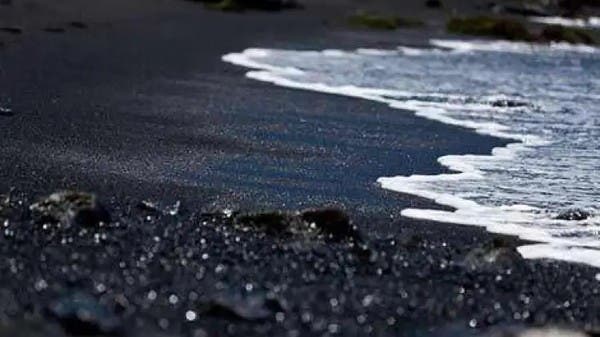A few hours after Egyptian President Abdel Fattah El-Sisi inaugurated the Black Sands complex, the new project captured the conversation of social media platforms, despite the fact that many did not know the importance of black sand.
Black sands are beach sediments that come from the sources of the Nile. They are called by this name because they contain a lot of heavy metals, so they are dark in color. Egypt includes 11 sites where black sand spreads.
Black sand deposits are found in Egypt in large quantities on the coasts of the Mediterranean and extend along the coast from Abu Qir to Alexandria to Rafah with a length of about 400 km, and are also found in other areas of the southern region of Berenice and Lake Nasser.
Estimates by the Nuclear Materials Authority in Egypt indicate that the geological reserve of black sand in Egypt amounts to about 1.3 billion cubic meters, and is widespread in the areas of Rashid in Beheira, Damietta and Baltim in Burullus in Kafr El-Sheikh and Al -Arish in North Sinai, while the average concentration of heavy metals within it is around 65%, making it the largest reserve in the world.
The investment cost of the complex Black Sands project is approximately £ 4 billion, including engineering and construction work, special equipment and a contribution to the design of the project, which has provided over 5,000 job opportunities. The project implementation period was 12 months. It aims to extract heavy metals from the black sands extending along the northern coast of Egypt, starting from the city of Abu Qir in Alexandria Governorate to the city of Al-Arish in North Sinai Governorate.
It was implemented on an area of 80 acres, where the new Black Sand Complex in Burullus includes 6 plants for the separation of minerals from the black sand ore.
High content of heavy metals
The data indicate that black sand contains a high percentage of heavy metals of economic importance as they are inserted in important strategic industries: it was named so because it contains a high percentage of dark-colored iron ores such as ilmenite and magnetite.
Among the most important minerals found in black sand are ilmenite, zircon, magnetite, rutile and garnet, as well as monazite, which contains radioactive materials. Countries are working to extract these minerals from black sand for economic exploitation, while at the same time time cleaning the beaches of radioactive materials harmful to the environment.
Minerals extracted from black sand are used by many industries, including the ceramic industry, as well as the manufacture of ceramics and paints, as well as the manufacture of aircraft and automotive structures, as well as various electronic and technology industries.
Black sand in Egypt contains about 8 types of heavy metals, the percentage in the composition of this sand varies from 1 to 8% and reaches more than 80% in the Burullus area in Kafr El-Sheikh governorate, which is the highest concentration of these minerals in black sands.
The net mineral resources of the project amount to 238.5 million tons, as revealed by the Egyptian Black Sands Company, with an average concentration of heavy metals of 3.39%, enough to operate for about 16 years with a utilization rate of 15 million tons / year The company’s expected production will represent approximately 3 to 5% of global production.
Important elements in strategic industries
The project will produce many important economic minerals which are included in many strategic industries, such as germanite and rutile, which are an important source for the production of titanium, a mineral which is included in important strategic industries such as the production of aeronautical structures, missiles , submarines, spacecraft and prosthetic devices.
The project will also produce titanium dioxide, a metal used in the sacrifice of paints, dyes, paper, leather and medical preparations.The project will also produce zircon, which is used in the manufacture of ceramics, sanitary ware, glass, alloys, motors, dental implants and furnace lining.
In addition, magnetite is used in the production of sponge iron, high quality cast iron, high temperature concrete, mineral fertilizers and is used in soil desalination.
Granite is also used in the production of laurel stones and sandpaper, as well as for water filters and for cutting marble and granite by air and water pressure, and zircon is a major source of elements of rare earths used in the production of electronic chips used in high-tech industries, such as smartphones and electric cars, and a secondary source of cerium and uranium.


